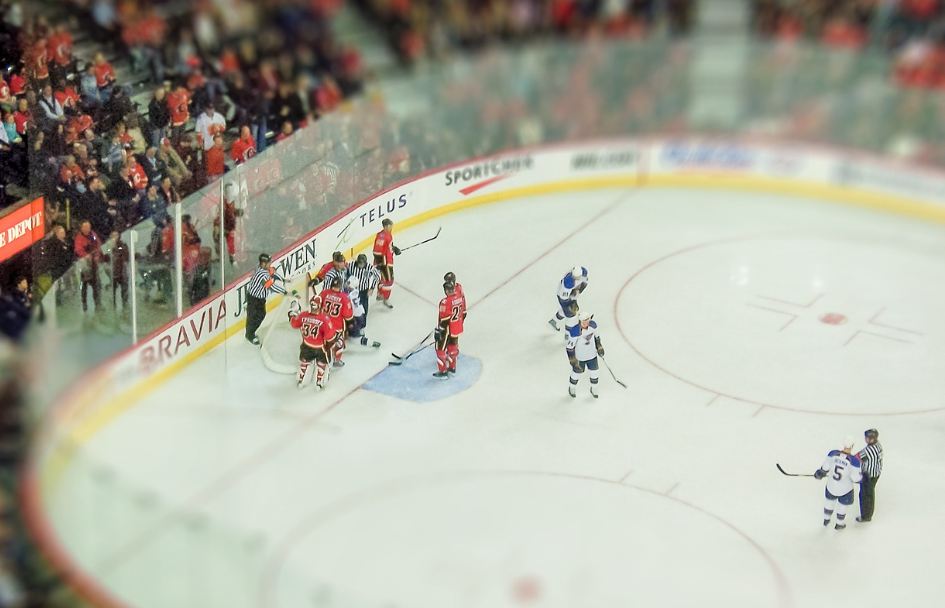What is the point of icing in hockey?

Ice hockey is a fast-paced and exhilarating sport that captivates fans around the world. One of the key elements that adds excitement and complexity to the game is icing. The significance of icing in hockey, exploring its purpose, rules, impact on gameplay and strategy, as well as common misconceptions. By the end of this article, you will have a deep understanding of icing and its role in the game of hockey.
The purpose of icing in hockey
To comprehend the importance of icing, we must first understand its purpose. Icing is a rule in hockey designed to prevent teams from gaining an unfair advantage by clearing the puck to the opposite end of the rink. When a player shoots the puck from behind the center line, and it crosses the opposing team’s goal line without being touched by an opposing player, icing is called. The play is then stopped, and a faceoff takes place in the defending team’s zone.
The purpose of icing is twofold. Firstly, it encourages offensive play by penalizing teams for simply clearing the puck without any strategic intention. It forces teams to advance the puck and engage in active gameplay, creating opportunities for goals and exciting plays. Secondly, icing serves as a defensive mechanism for teams that are under pressure. When a team is struggling to defend against their opponents’ attack, they can use icing as a means to relieve pressure and reset their defensive structure.
Rules and regulations of icing
To fully comprehend the significance of icing in hockey, it is crucial to understand the rules and regulations surrounding it. Icing is called when the puck crosses the goal line, and an opposing player from the defending team is not the first to touch it. However, there are a few exceptions to this rule. If a team is shorthanded due to a penalty, they are allowed to ice the puck without incurring a penalty. Additionally, if a player shoots the puck from inside their defensive zone and it goes directly into the opponent’s net, it is not considered icing.
When icing is called, play is stopped, and a faceoff occurs in the defending team’s zone. This gives the opposing team an opportunity to gain possession and launch an offensive attack. The faceoff location is determined by where the puck was shot from, ensuring fairness and balance in the game. Understanding these rules is crucial for players, coaches, and fans alike, as it allows for a deeper appreciation of the strategic elements involved in icing.
How icing affects gameplay and strategy
Icing has a profound impact on the flow and dynamics of a hockey game. It not only affects the team that commits the infraction but also influences the strategy and decisions of the opposing team. When icing is called, the defending team is not allowed to make any line changes, which can lead to fatigue and a disadvantageous situation. This opens up opportunities for the opposing team to capitalize on the tired defenders and launch a quick offensive attack.
For the team that committed the icing, it becomes a defensive challenge. They must quickly regroup and prepare for the ensuing faceoff in their defensive zone. This requires strong communication, discipline, and positioning to prevent the opposing team from capitalizing on the situation. Coaches often implement specific strategies and systems to counteract the disadvantages of icing, such as assigning specific players to focus on faceoff wins or positioning their defensemen strategically to minimize scoring opportunities.
The role of icing in penalty killing
Icing also plays a significant role in penalty killing, which is when a team is shorthanded due to a player serving a penalty. When a team is down a player, they are often inclined to ice the puck as a defensive tactic. By doing so, they relieve pressure and gain valuable seconds to kill off the penalty. However, icing during a penalty kill can be risky, as it allows the opposing team to set up their power play in the offensive zone.
Coaches must carefully consider the decision to ice the puck during a penalty kill, weighing the benefits of relieving pressure against the risks of allowing the opposing team to establish a strong offensive presence. Effective penalty killing strategies involve a combination of aggressive forechecking, smart defensive positioning, and timely decisions regarding icing. Understanding the dynamics of icing during penalty kills is crucial for teams aiming to maintain a strong defensive structure and successfully kill off penalties.
Common misconceptions about icing
There are several common misconceptions surrounding icing in hockey that can lead to misunderstandings and confusion. One such misconception is that icing is always penalized. While icing is generally penalized with a faceoff in the defending team’s zone, there are exceptions to this rule, as mentioned earlier. Understanding these exceptions is crucial for players, coaches, and fans to accurately interpret the impact of icing on gameplay.
Another misconception is that icing is solely a defensive tactic. While icing can be used defensively to relieve pressure, it is also a strategic offensive play. For example, teams may intentionally ice the puck when they are shorthanded to waste time and minimize scoring opportunities for the opposing team. This demonstrates that icing is not limited to defensive purposes and can be utilized strategically by both teams.
Icing situations and strategies
Understanding different icing situations and strategies is essential for players and coaches to make informed decisions on the ice. One common situation is the race for the puck after an icing call. When icing is called, the race to touch the puck first becomes crucial. If the attacking team touches the puck first, play continues, and the icing is waved off. However, if the defending team touches the puck first, the play is stopped, and a faceoff occurs. Speed, agility, and anticipation are key factors in winning the race to the puck.
Teams also employ various strategies to capitalize on icing situations. For instance, teams may intentionally ice the puck when they have tired players on the ice and need to make a line change. By committing an icing, they can get fresh legs on the ice while ensuring the opposing team cannot make any line changes. This strategic use of icing can shift the momentum of the game and create scoring opportunities.
The impact of icing on player fatigue and injuries
Icing can have a significant impact on player fatigue and the risk of injuries. When a team commits icing, they are unable to make line changes, forcing the players on the ice to continue playing without rest. This can lead to increased fatigue and decreased performance as the game progresses. Fatigue can not only affect a player’s physical abilities but also their decision-making and mental acuity.
Furthermore, the intense nature of hockey, combined with the speed at which the game is played, increases the risk of injuries. Fatigue resulting from icing can contribute to players being more susceptible to injuries, as tired muscles are more prone to strains and sprains. Coaches and trainers must carefully manage player ice time and monitor fatigue levels to minimize the risk of injuries caused by icing and player exhaustion.
The evolution of icing rules in hockey
Over the years, the rules surrounding icing in hockey have evolved to enhance gameplay and player safety. Originally, there were no icing rules, and teams could freely clear the puck to the opposing end without any repercussions. However, as the game progressed, it became evident that this led to a lack of offensive play and decreased excitement for fans. Thus, rules were introduced to penalize teams for simply clearing the puck without strategic intent.
In recent years, the NHL has implemented hybrid icing, a variation of the traditional icing rule. With hybrid icing, the linesman has the authority to determine if the defending player would have reached the puck before the attacking player. If the linesman deems that the defending player would have reached the puck first, icing is called, and play is stopped. This modification aims to reduce the risk of player injuries resulting from collisions during the race for the puck after an icing call.
Conclusion: The importance of understanding icing in hockey
In conclusion, icing is a crucial aspect of hockey that significantly influences gameplay, strategy, and the dynamics of the game. Its purpose is to ensure fairness and encourage active offensive play while providing a defensive mechanism for teams under pressure. Understanding the rules, impact, and strategic elements of icing allows players, coaches, and fans to appreciate the intricacies of the sport. By comprehending the significance of icing in hockey, we enhance our enjoyment and knowledge of this exhilarating sport. So next time you’re watching a hockey game, pay close attention to the icing calls and appreciate the strategic decisions made by the players and coaches.





